Disclosure: This article contains affiliate links. We may earn a commission from purchases at no extra cost to you, which helps our travel content.
As someone who spends his days restoring historical buildings, I've developed a keen eye for structural integrity and craftsmanship that extends to my travels. The Galápagos Islands presented a fascinating challenge: how do you build luxury accommodations on one of Earth's most protected ecosystems without compromising either the environment or the guest experience? After a two-week expedition across the archipelago with my builder's toolbelt metaphorically in tow, I'm convinced these islands have mastered the art of eco-luxury. Ka pai (well done) to these establishments that have managed to blend seamlessly with their surroundings while still offering amenities that would make even the most discerning traveler weak at the knees. From innovative water conservation systems to locally sourced building materials, these five lodges demonstrate that sustainability and luxury aren't mutually exclusive – they're perfectly complementary.
Pikaia Lodge: Where Architectural Innovation Meets Conservation
Perched atop an extinct volcano on Santa Cruz Island, Pikaia Lodge immediately caught my builder's attention with its striking modernist design. The main structure follows the natural contours of the crater, minimizing excavation impact while maximizing those jaw-dropping panoramic views.
What truly impressed me was the building envelope – a masterclass in passive climate control. The walls incorporate a double-skin façade system that eliminates the need for constant air conditioning despite the equatorial heat. The outer layer deflects direct sunlight while creating a ventilation chamber that naturally cools the interior spaces. As someone who's spent years retrofitting historical buildings for energy efficiency, I could appreciate the elegant engineering solution.
The infinity pool deserves special mention – not just for the obligatory Instagram moments but for its sophisticated water management system. It operates on a closed-loop filtration cycle that reduces freshwater consumption by nearly 80% compared to conventional pools. The staff explained how they harvest rainwater during wet seasons, storing it in underground cisterns built from locally quarried volcanic stone.
My ocean-view room featured furniture crafted by Ecuadorian artisans using sustainable bamboo – both beautiful and rapidly renewable. After days spent hiking volcanic landscapes and snorkeling with marine iguanas, returning to this architectural marvel felt like coming home to the future of sustainable luxury.

💡 Pro Tips
- Request Room 12 for the best sunrise views over the Pacific
- The complimentary use of their carbon-fiber mountain bikes is worth taking advantage of
- Book their private yacht excursion to South Plaza Island – the guide-to-guest ratio makes for an intimate wildlife experience
Finch Bay Eco Hotel: The Craftsman's Choice
If Pikaia represents the future of eco-luxury, Finch Bay on Santa Cruz Island embodies its soulful present. What struck me immediately was how the entire complex seems to have grown organically from its beachfront setting rather than being imposed upon it. The buildings follow the natural slope of the land, with elevated walkways that preserve the fragile ground vegetation below.
As a builder, I was drawn to examine the structural elements. The exposed beams throughout the property are reclaimed wood, salvaged from old fishing boats and given new life with minimal processing. This isn't just aesthetic virtue signaling – the salt-weathered patina tells authentic stories while reducing demand for new timber.
The water management systems deserve particular praise. Each accommodation features a custom-designed rainwater collection system that feeds into individual filtration units. My suite included a water usage monitor that gamified conservation – I found myself competing against my previous day's numbers, turning sustainability into a personal challenge.
The standout feature was my beachfront room's outdoor shower, constructed from local volcanic stone with clever drainage systems that filter gray water through a series of natural plant filtration beds before being used for landscape irrigation. I've worked on similar systems in historical renovations, but rarely have I seen them implemented with such elegant simplicity.
For wildlife viewing directly from your accommodation, I recommend bringing a quality compact binoculars – I spotted blue-footed boobies and marine iguanas from my private deck without having to leave the comfort of my hammock.
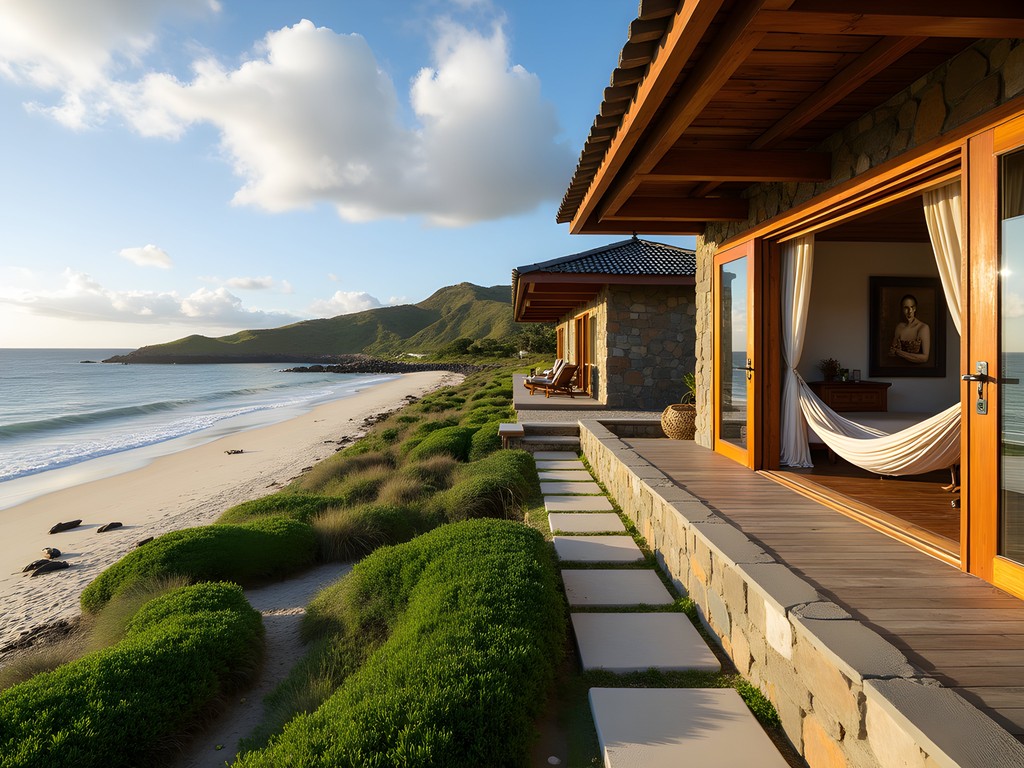
💡 Pro Tips
- Ask for a second-floor room for better cross-ventilation and views
- The hotel's restaurant sources ingredients from their own organic garden – tour it with the chef if possible
- Their beach cleanup activity isn't just greenwashing – it's a genuinely educational experience about marine conservation
Scalesia Lodge: Luxury Treehouses in the Highlands
On Isabela Island, Scalesia Lodge offers perhaps the most unique accommodation concept in the Galápagos – luxury safari-style tents elevated on platforms within the endemic Scalesia forest. As someone who's worked with both traditional timber framing and modern tensile structures, I was fascinated by this hybrid approach to hospitality construction.
The engineering challenge here is substantial: how do you create permanent structures with minimal ground disturbance in a protected forest? Their solution involves helical piers that anchor the platforms with minimal soil disruption, allowing tree roots to continue growing undisturbed. The platforms themselves are composite materials made from recycled plastic – durable against the elements while reducing demand for timber.
Each tent structure employs a sophisticated double-layer canvas system that maintains comfortable temperatures naturally. The outer layer reflects solar radiation while the inner layer provides insulation, creating a comfortable microclimate without mechanical cooling. Small solar-powered fans provide additional air circulation on particularly still days.
The communal areas showcase traditional Ecuadorian building techniques with contemporary applications. The main lodge features a soaring roof structure that channels breezes through the dining area while collecting rainwater that's stored in underground tanks. The wooden joinery throughout is exceptional – mortise and tenon connections without metal fasteners, a technique I've employed in historical restorations that requires precise craftsmanship.
For capturing the unique wildlife encounters around your tent, I recommend a telephoto lens – I woke to find a Galápagos hawk perched just meters from my deck and was grateful to have quality glass to document the moment.
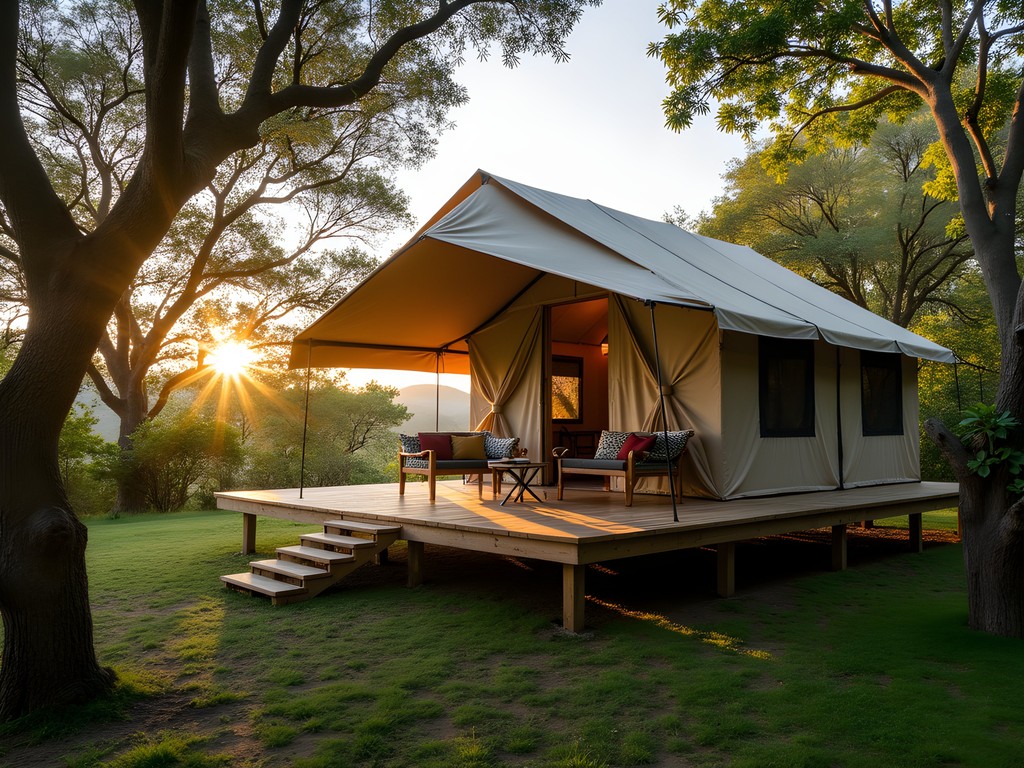
💡 Pro Tips
- Request Tent 7 or 8 for the most privacy and best forest views
- Pack a quality headlamp for navigating the elevated walkways at night
- Their highland hikes are excellent for spotting the elusive Galápagos hawk
Galapagos Safari Camp: Canvas Engineering Excellence
In the highlands of Santa Cruz Island, Galapagos Safari Camp presents another take on the luxury tent concept, though with significant architectural differences from Scalesia Lodge. Here, the nine tents are arranged in a semicircle on a hill overlooking the national park and distant ocean, each positioned to maximize both privacy and views.
What impressed my builder's sensibilities was the foundation system. Rather than traditional concrete footings that would permanently alter the landscape, they've employed an adjustable pier system that can be removed without trace if necessary. The main lodge building demonstrates exceptional stonework using volcanic rock sourced from permitted quarries, with mortarless construction techniques that echo ancient Incan building practices I've studied in Peru.
The water conservation systems here are particularly noteworthy. Each tent features a custom-designed shower system that atomizes water through high-pressure, low-flow fixtures, reducing consumption by nearly 70% while maintaining excellent pressure. The gray water is then processed through a series of natural filtration pools that support native plant species before being used for irrigation.
The tents themselves are engineering marvels – the canvas is a specialized triple-layer material developed specifically for the microclimate, with an outer layer that reflects UV radiation, a middle insulating layer, and an inner layer treated with natural mosquito repellents. The supporting structure uses locally sourced bamboo that's been treated using traditional methods rather than chemical preservatives.
For those early morning wildlife photography sessions around the property, I found my carbon fiber tripod invaluable – lightweight enough to carry everywhere yet stable enough for those dawn and dusk shots when light is limited.
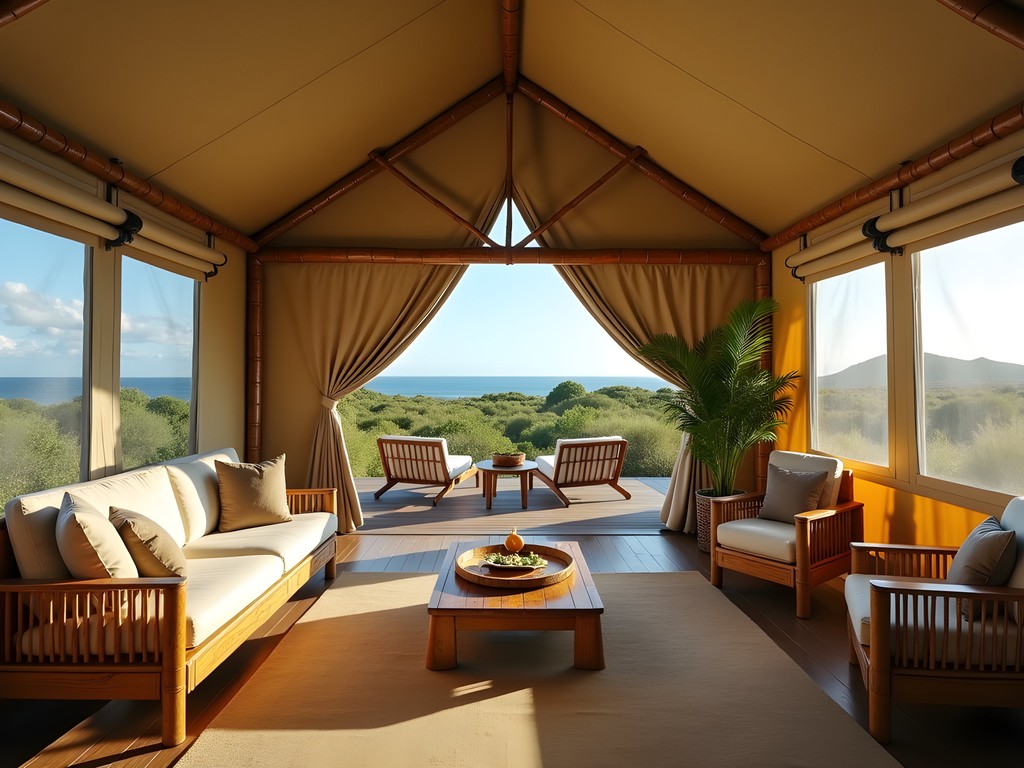
💡 Pro Tips
- The infinity pool is typically empty before 8am – perfect for a private sunrise swim
- Book their farm-to-table dinner experience which includes helping harvest ingredients
- Their telescope for stargazing is professional-grade – worth staying up for on clear nights
Lava Lodge: Boutique Waterfront Innovation
On the smallest scale of our luxury accommodations but no less impressive is Lava Lodge on San Cristobal Island. With just four waterfront cabins, this boutique property demonstrates that sustainability doesn't require massive infrastructure investments – just thoughtful design and execution.
The cabins are constructed primarily from recycled shipping containers, a building method I've worked with extensively in post-earthquake Christchurch. The thermal challenges of metal construction in an equatorial climate are significant, but they've addressed this brilliantly with strategic shading, reflective exterior finishes, and natural ventilation systems that create passive cooling corridors through each unit.
What particularly caught my attention was the structural adaptation. The containers have been reinforced and modified to include large sliding glass doors that transform each cabin into an indoor-outdoor living space. The structural engineering required to maintain integrity while creating these openings is impressive – they've added reinforcement exactly where needed without overbuilding.
The water systems demonstrate practical ingenuity. Each cabin features a rooftop solar water heating system with gravity-fed pressure, eliminating the need for electric pumps. The shower water drains through a series of planter boxes on each private deck, supporting native salt-tolerant species while naturally filtering gray water.
My waterfront cabin offered direct access to a protected cove where sea lions regularly hauled out just meters from my deck. For capturing these close wildlife encounters, a waterproof camera proved invaluable – I could transition from breakfast to snorkeling with sea lions in minutes without worrying about equipment damage.
The communal areas feature a small but thoughtfully designed outdoor kitchen where guests can prepare their own meals using locally sourced ingredients provided daily by the staff. The countertops are made from recycled glass embedded in concrete – a technique I've used in sustainable building projects that transforms waste into beautiful, functional surfaces.

💡 Pro Tips
- Cabin 3 has the best position for watching sea lions
- Their kayaks are available 24/7 – a pre-breakfast paddle offers incredible wildlife viewing
- Ask about their community plastic recycling initiative – you can participate during your stay
Final Thoughts
As I packed my well-worn travel backpack after two weeks of eco-luxury exploration, I couldn't help but reflect on how these five properties have redefined what sustainable accommodation can be. They've proven that true luxury isn't about excess – it's about thoughtful design that enhances both guest experience and environmental stewardship. Each lodge has found unique solutions to the challenges of building in this protected paradise, creating experiences that honor the islands' fragile ecosystems while still delivering world-class comfort. As builders and travelers alike, we have much to learn from these pioneering properties. Kia ora to the Galápagos for showing us that the future of luxury travel lies not in opulence for its own sake, but in the elegant integration of human comfort with natural preservation. If you and your partner are planning that special splurge trip, I can't think of a better investment than experiencing these islands from the thoughtful luxury of these remarkable lodges.
✨ Key Takeaways
- Sustainable luxury in the Galápagos focuses on innovative building techniques that minimize environmental impact
- Water conservation systems are ingeniously integrated into the design of all top properties
- Local and recycled materials create authentic connections to place while reducing carbon footprint
- The best eco-lodges position accommodations to maximize wildlife viewing opportunities directly from your room
📋 Practical Information
Best Time to Visit
December through May (warm season with calmer seas)
Budget Estimate
$800-1500 USD per night including most activities and meals
Recommended Duration
10-14 days to experience multiple islands and lodges
Difficulty Level
Moderate (Some Lodges Require Transfers Via Small Boats And Hiking)

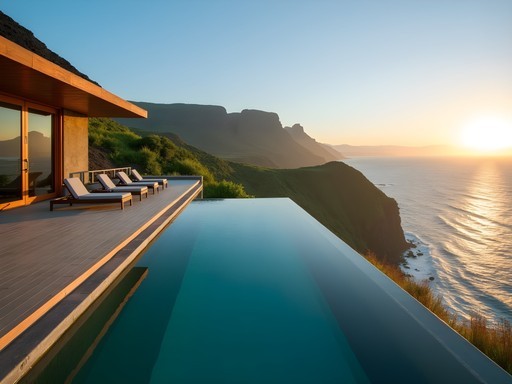

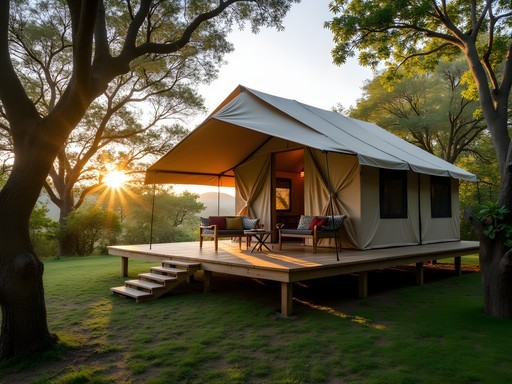

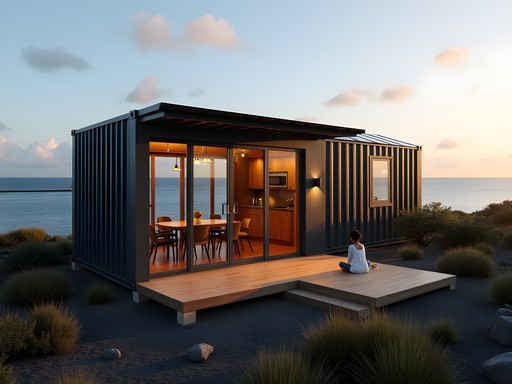


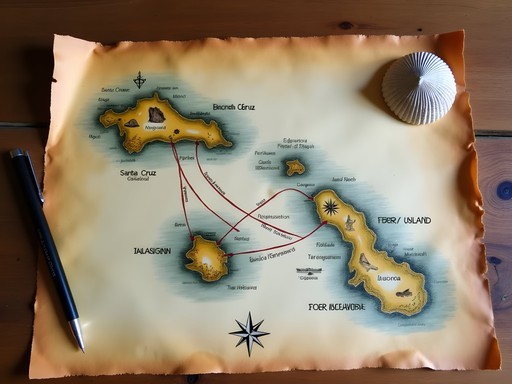


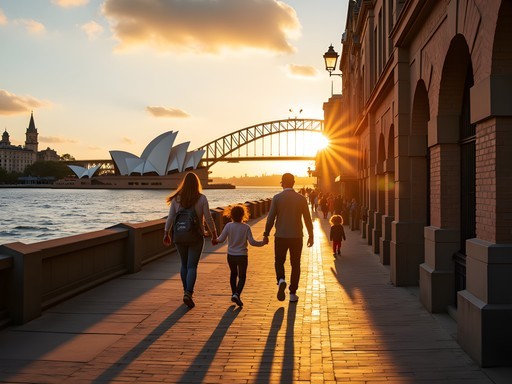
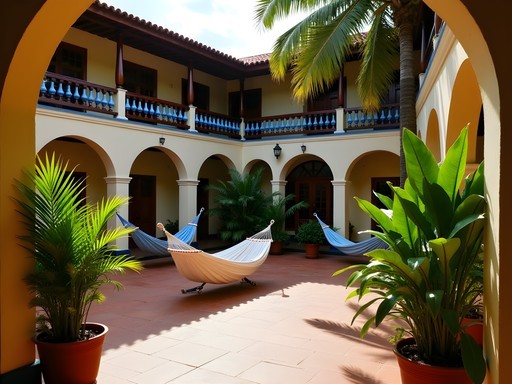
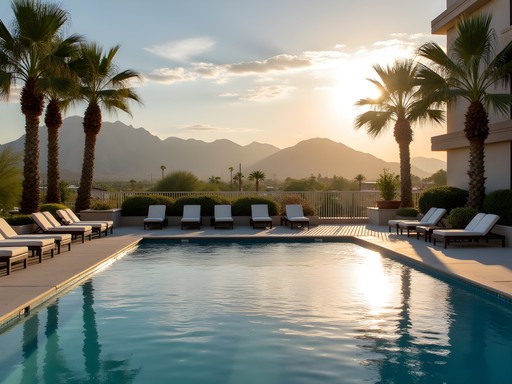

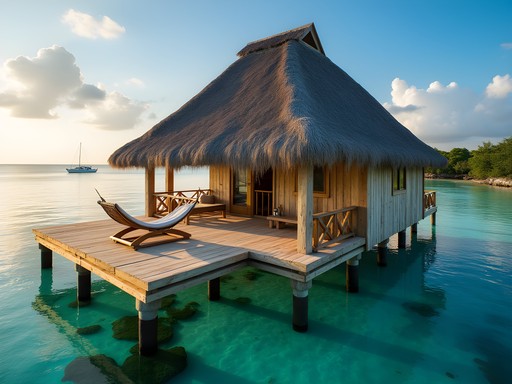
Comments
coolmood
Has anyone tried the Galapagos Safari Camp? Wondering if it's good for families with teens?
journeyone
We took our 14 and 16 year olds there last year and they absolutely loved it! The family tent was spacious, and the guides were amazing with getting the kids engaged in wildlife spotting. The communal dinners were actually a highlight - our teens made friends with other guests.
coolmood
That's exactly what I needed to hear! Booking it for spring break. Thanks!
Hayden Butler
Mason, your architect's perspective on these lodges is fascinating! I stayed at Finch Bay last year and was equally impressed by their commitment to sustainability. The water conservation system is remarkable - they explained how they collect and filter rainwater for much of their operations. One tip for future travelers: book their day trips to North Seymour and Bartolomé well in advance. I packed my water shoes which were essential for the wet landings and rocky shores. The Galápagos taught me how luxury and conservation can truly go hand-in-hand when done thoughtfully.
wildzone
Great post! Did you find Pikaia Lodge worth the splurge? The infinity pool looks amazing but the prices are steep!
Mason Fox
Thanks for asking! Pikaia is definitely a splurge, but I found the value in their sustainability initiatives and the guided excursions that come with your stay. Their private yacht for day trips was a game-changer compared to the larger tour boats.
wildzone
That's good to know! The private excursions might make it worth it then.
journeyone
Those Scalesia Lodge treehouses look incredible! Definitely adding this to my bucket list.
coolmood
Right? I'm saving up for this trip now. Anyone know what the best time to visit is?
Hayden Butler
I was there last April and it was perfect - not too crowded and the wildlife was incredibly active. The shoulder seasons (April-May and September-October) give you the best balance of good weather and fewer tourists. Just bring a light rain jacket!
islandadventurer
Just got back from staying at Pikaia and Finch Bay! Quick tip: book your day trips through the lodges rather than trying to save money booking separately. The lodge-organized excursions were smaller groups and went to less crowded spots. Also, the guides were incredibly knowledgeable - our Pikaia guide was a marine biologist who'd been working in Galapagos for 15 years!
smartzone7651
Did you find it easy to get between the lodges? Planning to split our stay between two places as well.
islandadventurer
Super easy! Most lodges arrange transfers for you. We took a water taxi from Finch Bay and then the lodge had a driver waiting at the dock. Totally seamless!
Haley Hamilton
Mason, this is such a thoughtful review from an architectural perspective! I've visited the Galápagos three times now, and Scalesia Lodge remains my favorite. As someone who usually backpacks, it was definitely a splurge, but waking up in those treehouses surrounded by mist and endemic birds was magical. One tip for anyone planning a visit - pack a good pair of binoculars! I brought my compact binoculars and they were essential for spotting wildlife from the lodge terraces. Also worth noting that Finch Bay has significantly improved their plant-based menu options since my first visit - they now have an impressive farm-to-table program worth checking out!
wavelover
Heading to Galapagos in November! Between Finch Bay and Galapagos Safari Camp, which would you recommend for someone who wants to see as much wildlife as possible?
Haley Hamilton
Not Mason, but I've stayed at both! If wildlife is your priority, I'd choose Finch Bay. It's right on the beach with marine iguanas and sea lions practically at your doorstep. The Safari Camp has amazing views but you'll need to take more excursions to see the iconic wildlife.
wavelover
Thanks Haley! That's super helpful. Finch Bay it is!
smartzone7651
Great post! Those treehouses at Scalesia Lodge look amazing!
cityone
We stayed at Pikaia Lodge last year and it was absolutely worth every penny! The architecture really is stunning, and I loved how they've integrated sustainability into every aspect. The infinity pool overlooking the savanna was our favorite spot - we spent hours there just watching the finches and occasional tortoise. Mason, did you get a chance to do any of their guided tours? We did the day trip to Bartolomé Island and it was incredible.
islandadventurer
I'm thinking about booking Pikaia for our honeymoon next spring. Was it really worth the splurge? The prices are making me nervous!
cityone
Absolutely worth it for a honeymoon! It's pricey but the service is impeccable and the experience is once-in-a-lifetime. They even surprised us with a private dinner on our last night.
Taylor Moreau
Mason, excellent breakdown of these properties. As someone who's visited the Galápagos multiple times for both leisure and business retreats, I can confirm Pikaia Lodge is truly exceptional. The architectural elements you highlighted are spot-on - the way they've integrated the building into the landscape while minimizing environmental impact is masterful. One thing I'd add about Finch Bay: their farm-to-table program has expanded significantly since your visit. They now source nearly 70% of their produce from their own sustainable farm. The executive chef offers cooking classes using these ingredients which I found to be a highlight of my stay. For anyone planning a visit, I'd recommend packing a good pair of binoculars and my trusty travel journal - documenting the unique wildlife encounters is something you'll treasure forever.
wintermood
Those cooking classes sound amazing! Were they very expensive?
Taylor Moreau
They're included in certain package stays, but otherwise around $85 per person. Considering you get a multi-course meal that you help prepare, plus wine pairings, it's quite reasonable for Galápagos prices.
Venture X
Premium card with 2X miles, $300 travel credit, Priority Pass